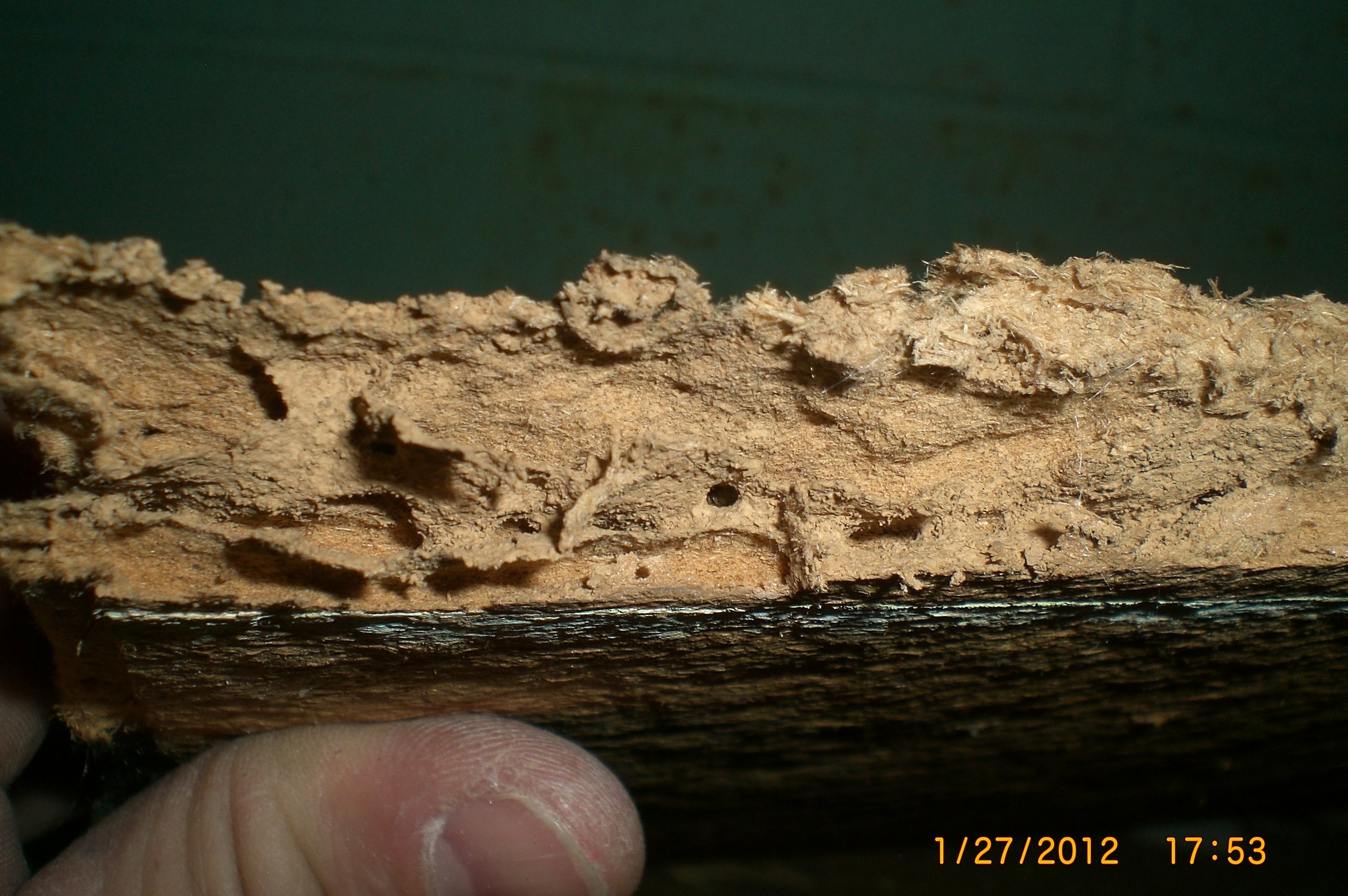Wood destroying Insects
Wood destroying insects should be a concern in any house with a wooden structure or components. Failure to properly identify and deal with the presence of WDI can lead to damage to the structure and other wooden components of the house and create the need for expensive repairs.
Termites
Termites are the most invasive wood destroying insects ad cause millions of dollars in damage each year to residential homes. Based on the location of their colonies, termites can be divided into three species: subterranean, drywood, and dampwood.
Wood damaged by termites may have the interior wood riddled with tunnels while the exterior is left intact .
Termites have several characteristic features. The body is divided into three sections (head, thorax, and abdomen). If wings are present, there are usually four wings, with both pairs having similar size and shape. The wings are almost clear to smoky black in color, and when not in flight the wings extend past the tip of the abdomen. These wings are broken off after the mating flight is finished.
Termites have a broad waist and antennae that resemble a string of beads. These features along with their coloring allow for the identification of termites.
It is important to be able to distinguish between swarming termites and ants. The two often swarm around the same time, but the means to control them are very different.
Most common termite species in Nebraska is subterranean.
DETECTION OF SUBTERRANEAN TERMITES
Detection of subterranean termites is difficult. This is because the termites remain hidden inside the soil or wood. Those that are feeding on the wood are hardly seen. A sign of termite presence is seeing winged termites emerging from wood, on windowsills, or near lights. This does not mean that there is an infestation, but does give a good reason to check further. If swarmers are not visible, the presence of their wings is an indication of termites. The wings are broken off as a normal behavior and can be found near emergence holes, on windowsills, or in cobwebs.
Another sign of a possible termite problem is the presence of mud tubes along the foundation of the house or other vertical supports. These tubes are used as roads for the termites when they search for food. The tubes provide protection from natural enemies and protect termites from dehydration.
Fecal pellets from this termite are often clumped in galleries or used in the construction of mud tubes, so rarely are they loosely scattered.
Carpenter Ants
Carpenter ants tend to build their nests in homes, they usually begin their colonies in decaying wood and slowly work their way into the solid wood this causes problems when the ants begin to hollow out structural beams to enlarge their nests. This occurrence is slow so the damage is also slow and may take long time to notice, unless the nest is a satellite of a nearby nest.
IDENTIFICATION
Carpenter ants are a large size ant with workers growing up to 1/4 of an inch and the queen up to 3/4 of an inch. The body of this type of ant varies in color from black to red and black to light brown.
A key feature that distinguishes carpenter ants from other ants is their evenly convex dorsum when viewed from the side while other species have a small dip.
DETECTION
Detection of a single ant may not be difficult, but finding the colony may prove a challenge since carpenter ants will travel up to 200 yards to forage. Also the colony is normally hidden in some location that has a source of moisture.
A key sign to look for when inspecting for carpenter ants is an accumulation of coarse sawdust. The sawdust will be ejected from natural cracks or slits in the wood made by the ants, and may contain dead ants or bits of eaten insects.
Another sign to look for is foraging trails. These are the paths that the ants travel while foraging for food. These are easiest to locate between sunset and sunrise when the ants are most active. The paths follow natural contours and lines of least resistance; these paths can also cross directly through lawns and are kept clear of any debris.




